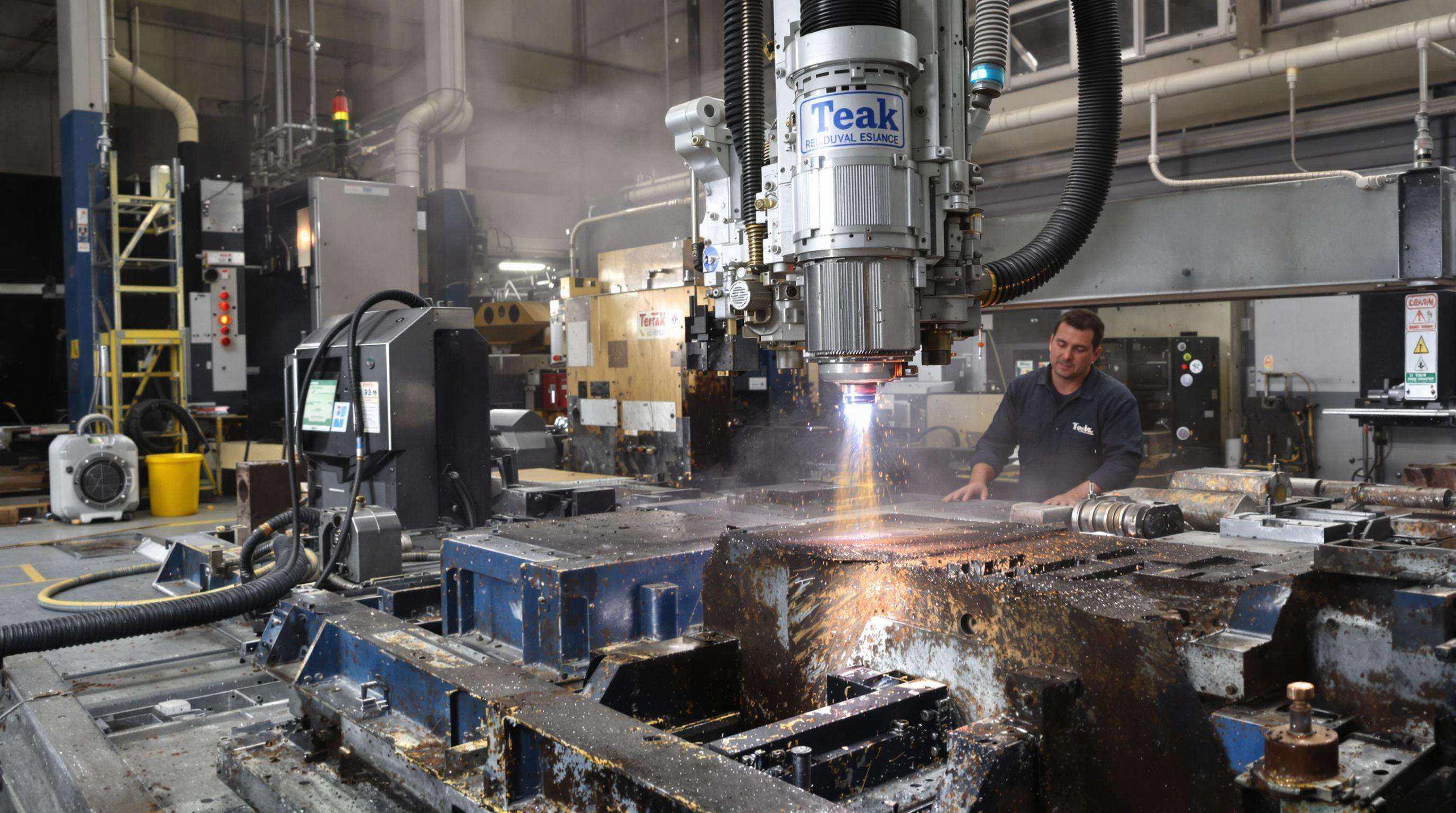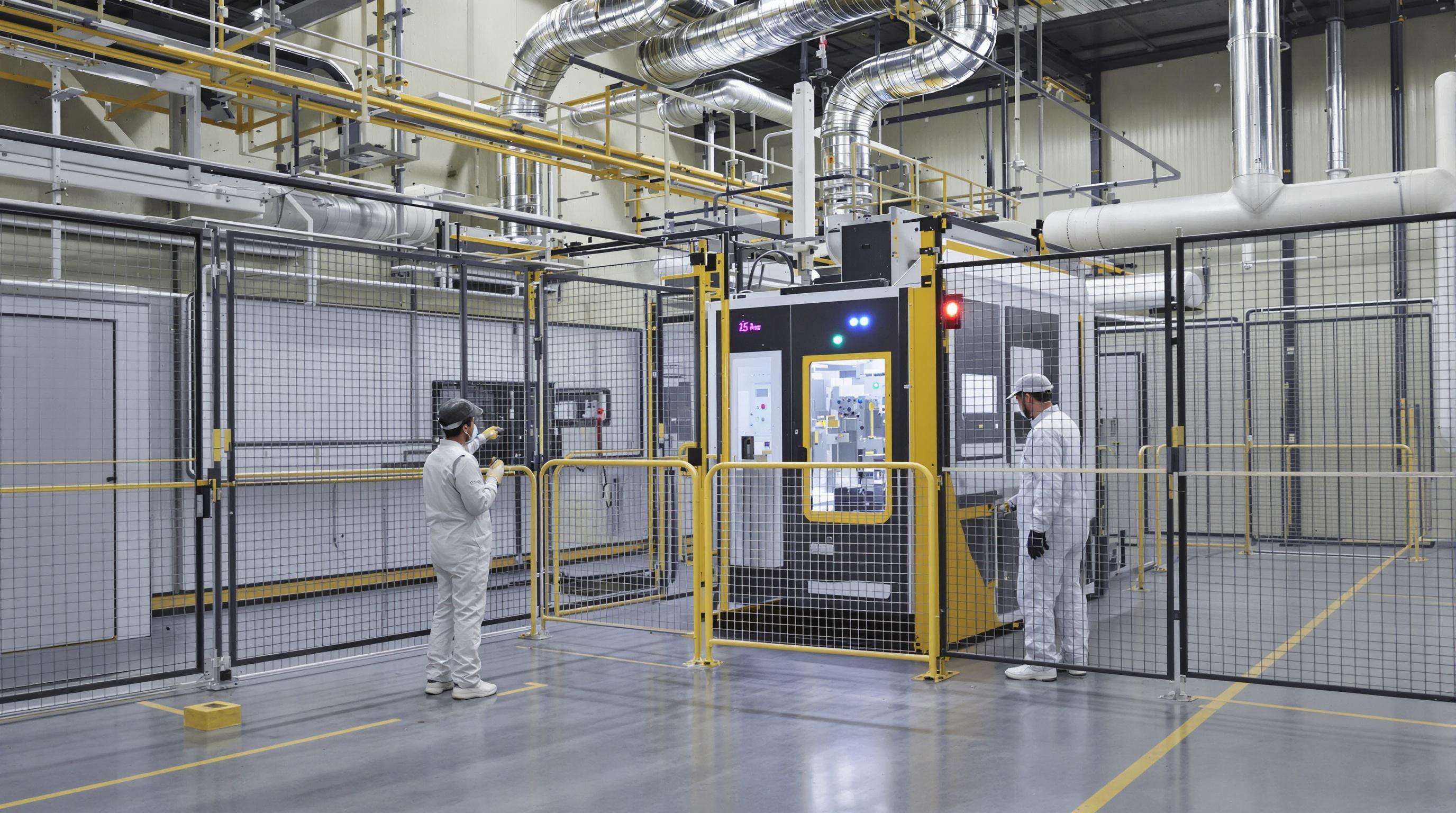Understanding 3000W Laser Cleaner Power and Its Industrial Impact

Surface cleaning in industrial settings requires both accuracy and the ability to handle large areas, which is why many shops turn to 3000W laser cleaners when dealing with tough jobs. These powerful machines are particularly good at stripping away stubborn paint layers, heavy rust buildup, and all sorts of grime from materials such as stainless steel components and cast iron parts. At 3000 watts, we're looking at the top end of what's available commercially these days. This power level strikes a nice balance between getting the job done quickly and not wasting energy on overkill. Most maintenance teams find that this range works best for their needs without breaking the bank on unnecessary capacity.
What Sets a 3000W Laser Cleaner Apart in High-Power Cleaning (1000–3000W)?
The 3000W laser cleaner packs three times the punch compared to standard 1000W models, which means getting rid of those tough industrial grime deposits happens much quicker. According to field reports from manufacturing plants, these high powered units can clean at around 35 meters per minute on 1mm thick steel surfaces, making them about six times speedier than their lower wattage counterparts. For anyone dealing with thicker materials over 6mm, this higher power range becomes really important since regular lasers just can't cut through those stubborn oxide coatings that build up over time during production processes.
How Laser Power Influences Cleaning Speed and Efficiency
The amount of laser power used has a clear connection to how fast cleaning happens. When we bump up the wattage by 500W, most tests show cleaning speeds go up around 40 to 60 percent when working with carbon steel surfaces. But there's a catch once we get past 2500W. A 3000W machine doesn't really give much better results than a 2500W one, typically only improving performance by about 12 to 18 percent when dealing with thin layers of material. Anyone running these systems needs to think carefully about this tradeoff between power and cost. The truth is, those 3000W units eat through 27% more electricity compared to 2000W models, which makes sense given the minimal time savings they offer for moderately corroded surfaces in most real world situations.
3000W vs. Lower-Power Systems: Optimal Use Cases and Risk of Overengineering
-
Optimal for:
- Ship hulls requiring full paint stripping in under 90 minutes
- Railway track oxidation removal across multi-kilometer networks
-
Risks:
- Substrate warping on sub-3mm aluminum plates
- 18% higher operating costs versus 2000W systems in medium-duty tasks
Recent studies reveal 63% of 3000W deployments in oil and gas infrastructure are underutilized, with operators defaulting to maximum power for basic cleaning tasks. This overengineering reduces nozzle lifespan by 22% and increases annual maintenance costs by $15k–$28k per unit.
Core Applications of 3000W Laser Cleaners in Heavy Industry
High-Efficiency Paint and Rust Removal: Maximizing ROI with 3000W Power
The 3000W laser cleaning systems can take off those thick industrial paint layers (sometimes as much as 3mm deep) along with serious corrosion on steel structures about 2.3 times quicker than what we see with the older 1000W models. Recent testing back in 2023 showed these lasers stripping away marine grade epoxy coatings in just under eight minutes per square meter without damaging the underlying metal surface something absolutely essential when working on infrastructure projects that need structural integrity maintained. For bridge work specifically, contractors report cutting their labor expenses down around 57 percent versus traditional hand grinding methods. Most companies see their investment pay back within eighteen months or so if they're running an active fleet of construction equipment regularly.
Critical Use Cases in Shipbuilding, Oil & Gas, and Rail Infrastructure
- Shipbuilding: De-rusting hull plates (12–40 mm thickness) pre-welding
- Oil & Gas: Removing sulfide scale from pipeline joints without damaging X65/X70 steel
- Rail: Simultaneous cleaning of wheel flange contaminants and oxidation layers
The 3000W output is indispensable in offshore wind farm maintenance, where robotic systems remove saltwater-induced corrosion from 500+ ton turbine foundations 40% faster than traditional hydroblasting.
Case Study: Offshore Platform Maintenance Using 3000W Laser Cleaning
A North Sea operator deployed 3000W laser systems for annual platform maintenance, achieving:
| Metric | Traditional Method | 3000W Laser | Improvement |
|---|---|---|---|
| Coating Removal Rate | 4.2 m²/hr | 11.8 m²/hr | 181% |
| Surface Roughness (Ra) | 2.5–4 μm | 1.8–2.2 μm | 30% Smoother |
| Waste Generation | 820 kg/day | 4 kg/day | 99.5% Less |
The reduced environmental impact and 23% faster project completion enabled compliance with revised EU offshore safety regulations (2024).
Limitations on Thin or Sensitive Materials: When High Power Reduces Precision
While unmatched for heavy industrial tasks, 3000W lasers are unsuitable for:
- Aluminum aircraft skins (<3 mm thickness) due to warping risks at full power
- Historical preservation projects requiring <0.1 mm surface removal precision
- Composite materials used in modern railcar construction (carbon fiber/glass fiber blends)
Lower-power 200–500W systems maintain 0.02 mm accuracy for these applications—a necessary tradeoff against raw throughput.
Matching 3000W Power to Your Specific Application Needs
Laser Power Requirements for Light, Medium, and Heavy Corrosion Removal
Getting good results from a 3000W laser cleaner really depends on getting the settings just right. When dealing with light corrosion stuff under 50 microns thick, keeping the power below 800W works wonders for protecting what's underneath while still managing around 2 to 3 square meters per hour. Medium level corrosion between 50 and 200 microns responds well to powers between 1,200 and 2,000W. This range strikes a nice balance between how fast material gets removed (about 1.5 to 2 square meters per hour) and not wasting too much energy. For heavy duty jobs where corrosion exceeds 200 microns, the full 3000W power comes into play. These setups can clean 3 to 4 square meters per hour but operators need to adjust the pulses carefully to avoid creating tiny cracks in structural steel components during the process.
Material Type and Contaminant Compatibility with 3000W Laser Cleaners
Carbon steel plates between 6 and 25mm thick work really well with 3000 watt systems, getting rid of about 98 percent of contaminants. The situation changes though when dealing with thinner materials under 3mm. These tend to warp if exposed to power levels over 1500 watts because they just can't handle the heat buildup properly. When it comes to non ferrous metals such as aluminum, there's another problem altogether. These materials need specific wavelength settings which means standard fixed frequency 3000 watt units won't cut it for many applications. Speaking of different types of contamination, oil and grease present their own challenges too. A recent study from last year actually found that going with lower power options makes better financial sense for these kinds of organic contaminants rather than pushing higher wattage equipment.
Avoiding Overpowered Cleaning: Risks to Substrates and Cost Inefficiencies
A 2024 analysis of shipyard maintenance costs revealed that using 3000W lasers on sub-10mm steel plates increased energy expenses by 34% versus 1,500W systems, with no measurable productivity gain. Overpowered cleaning can:
- Reduce service life of optical components by 40–60%
- Create 15–25μm surface irregularities in stress-critical joints
- Increase fume extraction costs by requiring 30% higher airflow rates
Operators should conduct spectral analysis of contaminants before deployment—20% of industrial users surveyed in 2023 reported switching to lower-power systems after initial trials with 3000W units.
Safety, Compliance, and Operational Demands of 3000W Laser Systems

Laser Safety Protocols and Regulatory Compliance for High-Power Units
3000W laser cleaners are Class IV systems requiring strict safety protocols. Compliance with IEC 60825-1 (international laser safety) and ANSI Z136.1 (U.S. industrial standards) mandates:
- Designated Laser Safety Officers (LSOs) for oversight
- Thermal monitoring to prevent substrate temperatures exceeding 150°C
-
Beam path enclosures limiting stray radiation to below 5 mW/cm²
Facilities must implement engineering controls like fail-safe interlocks and administrative measures including biannual operator certification.
Fume Extraction and Byproduct Management at 3000W Output Levels
High-power ablation generates 40–60% more particulate matter than sub-2000W systems, requiring multi-stage filtration:
| Component | Function | Minimum Efficiency |
|---|---|---|
| HEPA filters | Capture 99.97% of ≥0.3μm particles | MERV 17+ |
| Activated carbon layers | Neutralize VOC emissions | 85% adsorption |
| Thermal management | Maintain air temperature below 45°C | 300 CFM airflow |
| Operators should conduct quarterly filter integrity tests to prevent OSHA non-compliance from nanoparticle exposure. |
FAQ
What are the optimal use cases for 3000W laser cleaners?
3000W laser cleaners are ideal for ship hull stripping, railway track oxidation removal, and oil and gas infrastructure cleaning tasks.
Are there risks associated with overusing 3000W laser cleaners?
Yes, overusing them can cause substrate warping, increase operating costs, and reduce nozzle lifespan and optical component service life.
Can 3000W lasers be used on sensitive materials?
No, they're unsuitable for thin materials like aircraft skins and composite materials due to precision requirements and warping risks.
How should safety be managed when using 3000W laser systems?
Safety management involves compliance with IEC and ANSI standards, appointing Laser Safety Officers, and using beam path enclosures and thermal monitoring.

